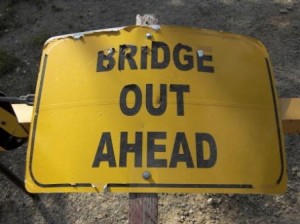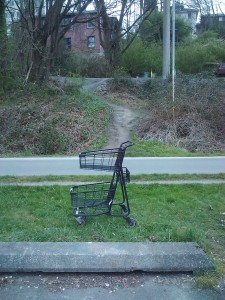 How are you doing with customers? How do you know? Which touchpoints matter the most in the customer journey, to your organization and to your customers? Are they the same? Do you even know what the customer journey looks like? Have you mapped the customer experience across all touchpoints? What does the conversation in your organization look like surrounding this?
How are you doing with customers? How do you know? Which touchpoints matter the most in the customer journey, to your organization and to your customers? Are they the same? Do you even know what the customer journey looks like? Have you mapped the customer experience across all touchpoints? What does the conversation in your organization look like surrounding this?
It turns out that much of what I’m describing is invisible. For most, Key Performance Indicators related to the customer’s experience largely reflect, how many people were exposed, how many bought, and how many returned or got help. But, those are only base indicators. In a world with a new customer high bar you need to go beyond base indicators. You need to understand what is important from your customers perspective, when, and where. You need to understand this at each touchpoint. “Yeah yeah, customer service has that,” you say. But they really don’t until you dig for it. And when it isn’t easy to dig for it, you don’t. Likewise for your prospective customer. They don’t want to dig either.
“don’t be fooled into thinking that is good enough”
Prospective customers are motivated to do something when they arrive on your digital or analog doorstep and they have chosen you are part of their possible world. When they personally encounter or experience the equivalent of the Bridge Out sign you could lose them immediately.
 If you’re really lucky this situation can lead to an unintended path or workaround which might work for a single transaction. Simply erecting the Bridge Out sign or providing a traffic signal seems easy and the right thing to do but don’t be fooled into thinking that is good enough. Unintended paths are easily mimicked by others, harm the customer experience, erode employee morale, and cost your organization money. At some point, you do need to fix the bridge. I have witnessed friends, family, and colleague vow to not do business with certain brands. The unintended paths became unacceptable. The brands involved have no knowledge of these occurrences. That’s because this happens at boundaries of the defined experience, at the edges of the systems used to capture information. Some of these people might later chime in on Amplicate, yelp or other social media letting brands know after the fact. But are brands listening, really listening? Part ignorance and part inaction, brands continue to provide disconnected experiences. One example, I witnessed firsthand was a Barnes and Noble loyal customer who excitedly brought in her online coupon for 15% off one item. She had received it in her email and dutifully printed it for presentation at her neighborhood bookseller. At checkout the cashier refused the coupon saying that it was for online purchases only. She vowed to never shop there again, online or in store. Sure, she’ll go for the coffee and in store browsing experience but she’ll vote with her dollars elsewhere.
If you’re really lucky this situation can lead to an unintended path or workaround which might work for a single transaction. Simply erecting the Bridge Out sign or providing a traffic signal seems easy and the right thing to do but don’t be fooled into thinking that is good enough. Unintended paths are easily mimicked by others, harm the customer experience, erode employee morale, and cost your organization money. At some point, you do need to fix the bridge. I have witnessed friends, family, and colleague vow to not do business with certain brands. The unintended paths became unacceptable. The brands involved have no knowledge of these occurrences. That’s because this happens at boundaries of the defined experience, at the edges of the systems used to capture information. Some of these people might later chime in on Amplicate, yelp or other social media letting brands know after the fact. But are brands listening, really listening? Part ignorance and part inaction, brands continue to provide disconnected experiences. One example, I witnessed firsthand was a Barnes and Noble loyal customer who excitedly brought in her online coupon for 15% off one item. She had received it in her email and dutifully printed it for presentation at her neighborhood bookseller. At checkout the cashier refused the coupon saying that it was for online purchases only. She vowed to never shop there again, online or in store. Sure, she’ll go for the coffee and in store browsing experience but she’ll vote with her dollars elsewhere.
Curious, I persisted to talk to the store manager to understand his decision to not accept online coupons in store. He cited that the prices had to be different because of the costs of the store infrastructure. I reminded him that the company is the same company online and in store and from a customers experience, what he was saying simply made no sense. He cited that those decisions are made out of corporate and played the powerless card.
“Empower your employees, period. They know what to do so let them do it.”
Here is the message to powerless employees. Start a new dialogue. Build a map. Earn Power. Do something different or corporate and your job won’t exist. There is no immunity to insure against a poor customer experience.
Corporate leadership – If your recipe is broken, you should fix it. If you don’t, you should lose your job. Hopefully the next guy or gal will create a better experience and a better company in the process. If they don’t your business will go away. Empower your employees, period. They know what to do so let them do it.
 Whether your organization serves other businesses, government or consumers, you need to think and behave like you have a customer experience chief, like a ship’s captain. Here are 3 simple guidelines for creating better experiences and customer journeys.
Whether your organization serves other businesses, government or consumers, you need to think and behave like you have a customer experience chief, like a ship’s captain. Here are 3 simple guidelines for creating better experiences and customer journeys.
- Have a unified vision that aligns your strategy to the customer experience.
- Create a customer journey map. Be intentional in where you are taking passengers.
- Then, get all hands on deck to deliver the best possible experience you can for your passengers and cargo. If a stairwell is slippery or a seat cushion missing, sure put a sign up but don’t let problems persist and give your crew the autonomy to fix, maintain, repair and delight. Your passengers will thank you and so will your bottom line.
Learn more at Blog Archives
Need help? Contact Us.
Not ready but want Tips, Tricks, and Tools – Subscribe to our What’s Next newsletter.

